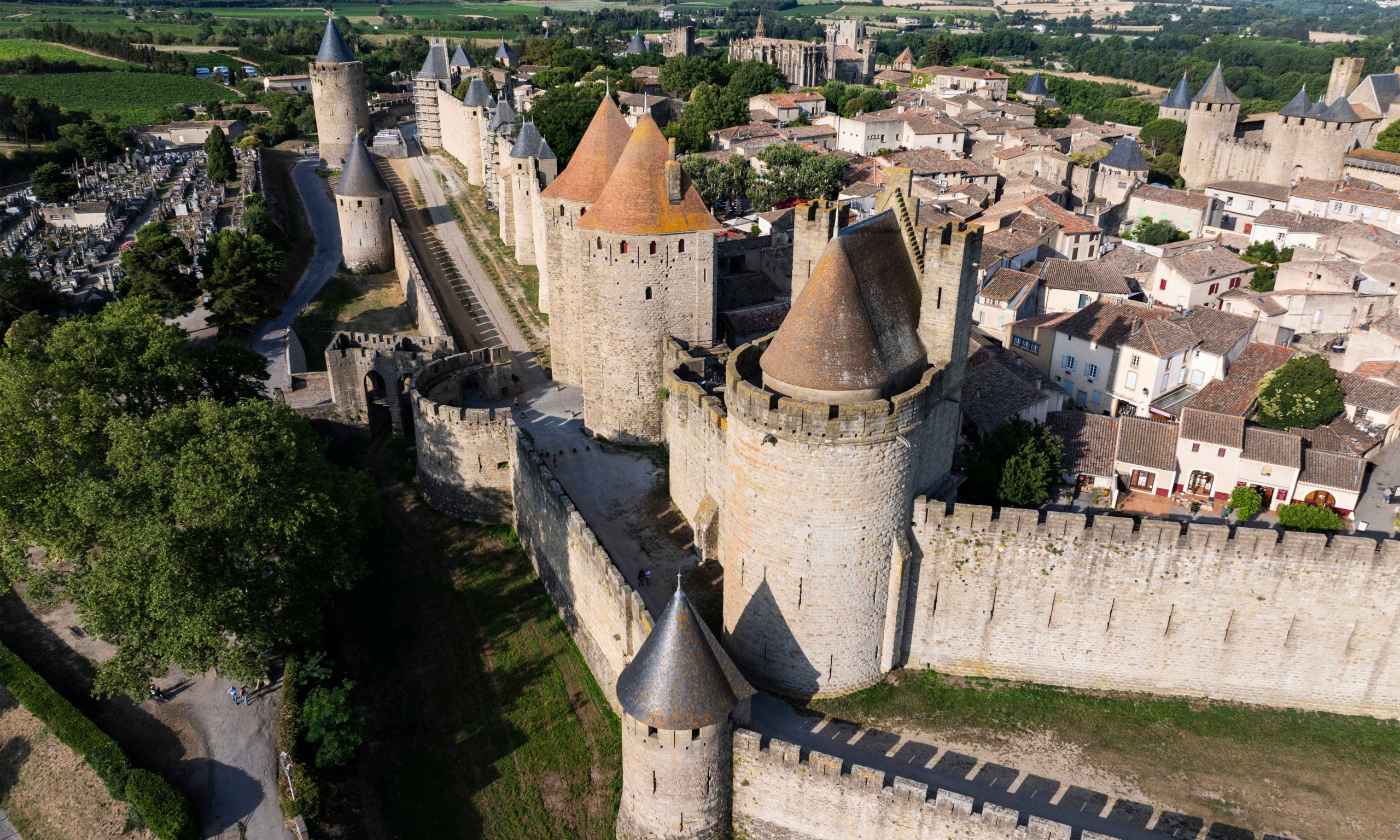The full 1.3km circuit will offer a 360 degree birds’ eye panorama of the city
© Sammy Billon – CMN
Visitors to the walled hilltop citadel of Carcassonne in south-west France will be able to walk the full 1.3km circuit of its upper ramparts from tomorrow (12 September)—for the first time in centuries. The route has been opened up thanks to a 31-month, €5.6m restoration programme by the national heritage agency, the Centre des Monuments Nationaux.
The circuit offers a 360-degree bird’s eye panorama of the city, whose form dates back to the 13th century. There will be a clear view of its multiturreted castle, its cathedral soaring above a huddle of Roman-tiled roofs, and at its feet the valley of the river Aude, bounded by the Black Mountains on the northern horizon.
The restoration involved the repair and stabilisation of 300 metres of the eastern inner curtain wall as well as the watchtowers. Of the €5.6m total cost, €4.5m was provided as a grant tied to the French government’s Covid recovery plan. The work follows refurbishments of the less dilapidated Gallo-Roman northern fortifications in 2008 and the medieval western wall in 2015.
“You might think 300 metres isn’t much, but it includes nine towers, all built of friable sandstone, much of which had to be replaced, together with new oak flooring in all the towers,” Franck Doucet, curator of Carcassonne’s castle and ramparts, told The Art Newspaper.
The towers under restoration
© Catherine Jeanjean – CMN
“Symbolically it’s important. It’s certainly the biggest restoration project here since Eugène Viollet-Le-Duc,” he continues, referring to the 19th-century architect who initiated a wholesale reconstruction of the city in 1844.
Guided to the city by his friend, the writer and historian Prosper Mérrimée, Viollet-Le-Duc turned a dilapidated and largely abandoned ruin into an idealised archetype straight from the pages of a 13th-century book of hours.
Though purists cavilled over some of the romantic flourishes—a drawbridge where none had ever existed, the wrong sort of tiles on the roofs—his vision led to the site making Unesco’s World Heritage List in 1979.
With an archaeological and architectural record dating back more than 2,000 years and cultural connections ranging from the 13th-century Cathars and the Albigensian crusade to the modern day Languedoc novels of Kate Mosse, Carcassonne has become one of France’s top tourist destinations, with around 700,000 visitors a year.
“You have the walls, the towers, the castle, the cathedral—it’s a unique ensemble in an exceptional setting,” Doucet says. It is, he adds, comparable to the monastic island community of Mont St Michel in Normandy—a place of integrated, holistic medieval identity.

